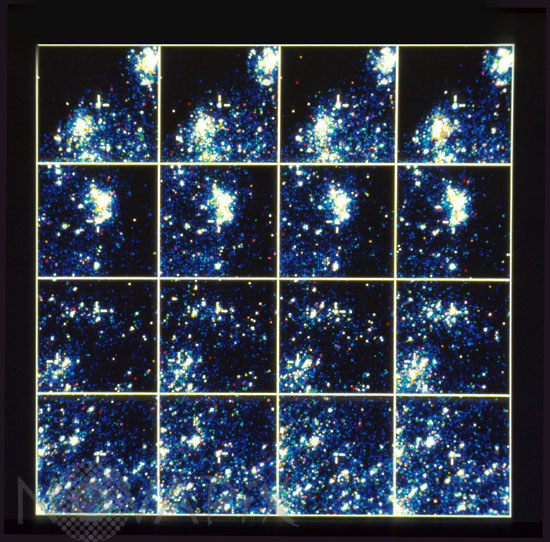Photo Agency - Astronomy - Space - Nature

Cepheids in the galaxy M81
author: Nasa/Stsci/Novapix
reference: a-eto04-00002
Image Size 300 DPI: 22 * 21 cm
Astronomers have discovered variable stars in the spiral galaxy M81, and measured the distance of the galaxy to be 11 million light-years (3.4 megaparsecs). They quote a 10% uncertainty in this result (plus or minus approximately one million light-years). Previous estimates of the galaxy's distance have ranged from 4.5 to 18 million light-years (1.4 to 5.6 megaparsecs). The astronomers used the Hubble' 5 Wide Field & Planetary Camera to study two fields in M81. In each field they took 22 twenty-minute exposures spread over 14 months to find the variable stars and measure their periods and brightness. Cepheids are pulsating stars that become alternately brighter and fainter with periods ranging from 10 to 50 days. Astronomers have known for over 50 years that the periods of these stars precisely predict their total luminous power, which allows their distance to be measured. Messier 81 is a large spiral galaxy in the constellation Ursa Major. It is a rotating system of gas and stars similar to our own Galaxy, the Milky Way, but approximately twice as massive. This galaxy achieved prominence three months ago when the brightest northern supernova this century was discovered. In the expanding universe, the Hubble Constant (H0) is the ratio of the recession velocities of galaxies to their distances. The age of the universe can be estimated from the Hubble Constant. The age is currently thought to lie between 10 and 20 billion years, but a more precise measurement of the Hubble Constant is required to narrow this range.
Keywords for this photo:
ASTRONOMY - CEPHEID - HST - HUBBLE CONSTANT - HUBBLE SPACE TELESCOPE - M81 - STAR - UNIVERSE EXPANSION - URSA MAJOR - VARIABLE STAR -
Contact : Stéphane Aubin +33-(0)9-51-26-53-76
© Novapix - All rights reserved


